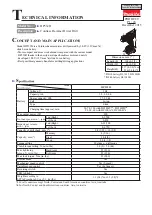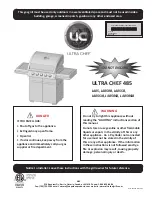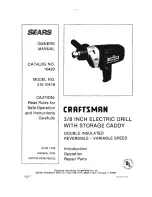
NATURAL GAS INSTALLATION
–
T
WIN
E
AGLES
G
AS
G
RILL
The installation must conform with local codes or, in the absence of local codes, with either
the national Fuel Gas Code, ANSI Z223.1/NFPA 54, or CAN/CGA-B149.1, Natural Gas
Installation Code or CAN/CGA-B149.2, Propane Installation Code.
1.
This gas appliance and its individual shutoff valve must be disconnected from the gas supply
piping system during any pressure testing of that system at the test pressures in excess of 1/2
psi (3.5 kPa).
2.
This appliance must be isolated from the gas supply piping system by closing its individual
manual shutoff valve during any pressure testing of the gas supply piping system at test
pressures equal to or less than 1/2 psi (3.5 kPa).
If the gas grill is factory built for natural gas, the regulator supplied is set for 4” water
column. The regulator is convertible to 10” water column for system LP application.
Do not use
with a 20-lb LP cylinder.
Make sure that the regulator is set for the correct gas type. To check,
remove the brass hex cap. You will find the conversion plastic pin attached to the cap to the
underside of the cap. If the disc (1/2 in. diameter) of the pin is close to the cap, then the regulator is
set for natural gas. If the disc is at the tip of the pin, away from the brass cap, the regulator is set
for system LP application. To convert to natural gas, remove the plastic conversion pin and invert
and replace it back in a manner such that the disc is close to the brass cap. For both natural and LP,
the maximum inlet pressure is 14” water column.
A typical natural gas installation is shown below. Make sure that the factory-supplied
regulator is used and installed with the arrow mark on the regulator pointing towards the gas grill.
Do not use any replacement regulator other than that specified by Twin Eagles. Use only pipe
sealants that are approved for use with natural and LP gases. An installer-supplied gas shutoff
valve must be installed in an accessible location.
7
(MUST BE EASILY
ACCESSIBLE)
CAUTION: Provide adequate ventilation holes in the enclosure for safety
purposes in the event of a gas leak.












































